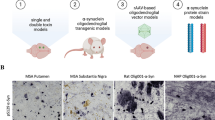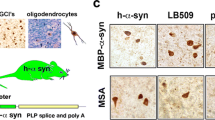Abstract
Since Riley and Day first described the clinical phenotype of patients with familial dysautonomia (FD) over 60 years ago, the field has made considerable progress clinically, scientifically, and translationally in treating and understanding the etiology of FD. FD is classified as a hereditary sensory and autonomic neuropathy (HSAN type III) and is both a developmental and a progressive neurodegenerative condition that results from an autosomal recessive mutation in the gene IKBKAP, also known as ELP1. FD primarily impacts the peripheral nervous system but also manifests in central nervous system disruption, especially in the retina and optic nerve. While the disease is rare, the rapid progress being made in elucidating the molecular and cellular mechanisms mediating the demise of neurons in FD should provide insight into degenerative pathways common to many neurological disorders. Interestingly, the protein encoded by IKBKAP/ELP1, IKAP or ELP1, is a key scaffolding subunit of the six-subunit Elongator complex, and variants in other Elongator genes are associated with amyotrophic lateral sclerosis (ALS), intellectual disability, and Rolandic epilepsy. Here we review the recent model systems that are revealing the molecular and cellular pathophysiological mechanisms mediating FD. These powerful model systems can now be used to test targeted therapeutics for mitigating neuronal loss in FD and potentially other disorders.
Similar content being viewed by others
Change history
17 July 2017
An erratum to this article has been published.
References
Dietrich P, Dragatsis I (2016) Familial dysautonomia: mechanisms and models. Genet Mol Biol 39(4):497–514
Norcliffe-Kaufmann L, Slaugenhaupt SA, Kaufmann H (2017) Familial dysautonomia: history, genotype, phenotype and translational research. Prog Neurobiol 152:131–148
Axelrod FB (2006) A world without pain or tears. Clin Auton Res 16(2):90–97
Norcliffe-Kaufmann L, Slaugenhaupt SA, Kaufmann H (2016) Familial dysautonomia: history, genotype, phenotype and translational research. Prog Neurobiol 152:131–148
Mendoza-Santiesteban CE et al (2014) Selective retinal ganglion cell loss in familial dysautonomia. J Neurol 261(4):702–709
Mendoza-Santiesteban CE et al (2012) Clinical neuro-ophthalmic findings in familial dysautonomia. J Neuroophthalmol 32(1):23–26
Mendoza-Santiesteban CE et al. (2017) Pathologic confirmation of optic neuropathy in familial dysautonomia. J Neuropathol Exp Neurol 76(3):238–244
Slaugenhaupt SA et al (2001) Tissue-specific expression of a splicing mutation in the IKBKAP gene causes familial dysautonomia. Am J Hum Genet 68(3):598–605
Anderson SL et al (2001) Familial dysautonomia is caused by mutations of the IKAP gene. Am J Hum Genet 68(3):753–758
Boone N et al (2010) Olfactory stem cells, a new cellular model for studying molecular mechanisms underlying familial dysautonomia. PLoS One 5(12):e15590
Huang B, Johansson MJ, Bystrom AS (2005) An early step in wobble uridine tRNA modification requires the Elongator complex. RNA 11(4):424–436
Esberg A et al (2006) Elevated levels of two tRNA species bypass the requirement for elongator complex in transcription and exocytosis. Mol Cell 24(1):139–148
Laguesse S et al (2015) A dynamic unfolded protein response contributes to the control of cortical neurogenesis. Dev Cell 35(5):553–567
Nedialkova DD, Leidel SA (2015) Optimization of codon translation rates via tRNA modifications maintains proteome integrity. Cell 161(7):1606–1618
Karlsborn T et al (2014) Familial dysautonomia (FD) patients have reduced levels of the modified wobble nucleoside mcmsU in tRNA. Biochem Biophys Res Commun 454(3):441–445
Lin FJ et al (2013) Ikbkap/Elp1 deficiency causes male infertility by disrupting meiotic progression. PLoS Genet 9(5):e1003516
Yoshida M et al (2015) Rectifier of aberrant mRNA splicing recovers tRNA modification in familial dysautonomia. Proc Natl Acad Sci USA 112(9):2764–2769
Otero G et al (1999) Elongator, a multisubunit component of a novel RNA polymerase II holoenzyme for transcriptional elongation. Mol Cell 3(1):109–118
Wittschieben BO et al (1999) A novel histone acetyltransferase is an integral subunit of elongating RNA polymerase II holoenzyme. Mol Cell 4(1):123–128
Rahl PB, Chen CZ, Collins RN (2005) Elp1p, the yeast homolog of the FD disease syndrome protein, negatively regulates exocytosis independently of transcriptional elongation. Mol Cell 17(6):841–853
Gardiner J et al (2007) Potential role of tubulin acetylation and microtubule-based protein trafficking in familial dysautonomia. Traffic 8(9):1145–1149
Solinger JA et al (2010) The Caenorhabditis elegans elongator complex regulates neuronal alpha-tubulin acetylation. PLoS Genet 6(1):e1000820
Johansen LD et al (2008) IKAP localizes to membrane ruffles with filamin A and regulates actin cytoskeleton organization and cell migration. J Cell Sci 121(Pt 6):854–864
Lefler S et al (2015) Familial dysautonomia (FD) human embryonic stem cell derived PNS neurons reveal that synaptic vesicular and neuronal transport genes are directly or indirectly affected by IKBKAP downregulation. PLoS One 10(10):e0138807
Naftelberg S et al (2016) Phosphatidylserine ameliorates neurodegenerative symptoms and enhances axonal transport in a mouse model of familial dysautonomia. PLoS Genet 12(12):e1006486
Tourtellotte WG (2016) Axon transport and neuropathy: relevant perspectives on the etiopathogenesis of familial dysautonomia. Am J Pathol 186(3):489–499
George L et al (2013) Familial dysautonomia model reveals Ikbkap deletion causes apoptosis of Pax3+ progenitors and peripheral neurons. Proc Natl Acad Sci USA 110(46):18698–18703
Hunnicutt BJ et al (2012) IKAP/Elp1 is required in vivo for neurogenesis and neuronal survival, but not for neural crest migration. PLoS One 7(2):e32050
Jackson MZ et al (2014) A neuron autonomous role for the familial dysautonomia gene ELP1 in sympathetic and sensory target tissue innervation. Development 141(12):2452–2461
Addis L et al (2015) Microdeletions of ELP4 are associated with language impairment, autism spectrum disorder, and mental retardation. Hum Mutat 36(9):842–850
Simpson CL et al (2009) Variants of the elongator protein 3 (ELP3) gene are associated with motor neuron degeneration. Hum Mol Genet 18(3):472–481
Strug LJ et al (2009) Centrotemporal sharp wave EEG trait in rolandic epilepsy maps to Elongator Protein Complex 4 (ELP4). Eur J Hum Genet 17(9):1171–1181
Kwee LC et al (2012) A high-density genome-wide association screen of sporadic ALS in US veterans. PLoS One 7(3):e32768
Gkampeta A et al (2014) Association of brain-derived neurotrophic factor (BDNF) and elongator protein complex 4 (ELP4) polymorphisms with benign epilepsy with centrotemporal spikes in a Greek population. Epilepsy Res 108(10):1734–1739
Reinthaler EM et al (2014) Analysis of ELP4, SRPX2, and interacting genes in typical and atypical rolandic epilepsy. Epilepsia 55(8):e89–e93
Cohen JS et al (2015) ELP2 is a novel gene implicated in neurodevelopmental disabilities. Am J Med Genet A 167(6):1391–1395
Kojic M, Wainwright B (2016) The many faces of elongator in neurodevelopment and disease. Front Mol Neurosci 9:115
Abashidze A et al (2014) Involvement of IKAP in peripheral target innervation and in specific JNK and NGF signaling in developing PNS neurons. PLoS One 9(11):e113428
Cheng WW et al (2015) Depletion of the IKBKAP ortholog in zebrafish leads to hirschsprung disease-like phenotype. World J Gastroenterol 21(7):2040–2046
Singh N et al (2010) The histone acetyltransferase Elp3 plays in active role in the control of synaptic bouton expansion and sleep in Drosophila. J Neurochem 115(2):493–504
Chen C, Tuck S, Bystrom AS (2009) Defects in tRNA modification associated with neurological and developmental dysfunctions in Caenorhabditis elegans elongator mutants. PLoS Genet 5(7):e1000561
Walker J et al (2011) Role of elongator subunit Elp3 in Drosophila melanogaster larval development and immunity. Genetics 187(4):1067–1075
Bar-Shai A et al (2004) Decreased density of ganglia and neurons in the myenteric plexus of familial dysautonomia patients. J Neurol Sci 220(1–2):89–94
Yang X et al (2016) Elongator Protein 3 (Elp3) stabilizes Snail1 and regulates neural crest migration in Xenopus. Sci Rep 6:26238
Hims MM et al (2007) A humanized IKBKAP transgenic mouse models a tissue-specific human splicing defect. Genomics 90(3):389–396
Bochner R et al (2013) Phosphatidylserine increases IKBKAP levels in a humanized knock-in IKBKAP mouse model. Hum Mol Genet 22(14):2785–2794
Chen YT et al (2009) Loss of mouse Ikbkap, a subunit of elongator, leads to transcriptional deficits and embryonic lethality that can be rescued by human IKBKAP. Mol Cell Biol 29(3):736–744
Dietrich P et al (2011) Deletion of exon 20 of the Familial Dysautonomia gene Ikbkap in mice causes developmental delay, cardiovascular defects, and early embryonic lethality. PLoS One 6(10):e27015
Dietrich P et al (2012) IKAP expression levels modulate disease severity in a mouse model of familial dysautonomia. Hum Mol Genet 21(23):5078–5090
Morini E et al. (2016) Sensory and autonomic deficits in a new humanized mouse model of familial dysautonomia. Hum Mol Genet 25(6):1116–1128
Lyst MJ, Bird A (2015) Rett syndrome: a complex disorder with simple roots. Nat Rev Genet 16(5):261–275
Close P et al (2006) Transcription impairment and cell migration defects in elongator-depleted cells: implication for familial dysautonomia. Mol Cell 22(4):521–531
Naumanen T et al (2008) Loss-of-function of IKAP/ELP1: could neuronal migration defect underlie familial dysautonomia? Cell Adh Migr 2(4):236–239
Chaverra M et al. (2017) The familial dysautonomia disease gene, Ikbkap/Elp1, is required in the developing and adult central nervous system. Dis Model Mech 10(5):605–618
Axelrod FB et al (2010) Neuroimaging supports central pathology in familial dysautonomia. J Neurol 257(2):198–206
Ochoa JG (2003) Familial dysautonomia (Riley-Day syndrome) may be associated with epilepsy. Epilepsia 44(3):472
Ueki Y et al (2016) Loss of Ikbkap causes slow, progressive retinal degeneration in a mouse model of familial dysautonomia. eNeuro 3(5)
Carelli V, La Morgia C, Sadun AA (2013) Mitochondrial dysfunction in optic neuropathies: animal models and therapeutic options. Curr Opin Neurol 26(1):52–58
Palma JA et al (2015) Increased frequency of rhabdomyolysis in familial dysautonomia. Muscle Nerve 52(5):887–890
Ohlen SB et al (2017) BGP-15 prevents the death of neurons in a mouse model of familial dysautonomia. Proc Natl Acad Sci USA 114(19):5035–5040
Lee G et al (2009) Modelling pathogenesis and treatment of familial dysautonomia using patient-specific iPSCs. Nature 461(7262):402–406
Lee G et al (2012) Large-scale screening using familial dysautonomia induced pluripotent stem cells identifies compounds that rescue IKBKAP expression. Nat Biotechnol 30(12):1244–1248
Valensi-Kurtz M et al (2010) Enriched population of PNS neurons derived from human embryonic stem cells as a platform for studying peripheral neuropathies. PLoS One 5(2):e9290
Zeltner N et al (2016) Capturing the biology of disease severity in a PSC-based model of familial dysautonomia. Nat Med 22(12):1421–1427
Boone N et al (2012) Genome-wide analysis of familial dysautonomia and kinetin target genes with patient olfactory ecto-mesenchymal stem cells. Hum Mutat 33(3):530–540
Herve M, Ibrahim EC (2016) MicroRNA screening identifies a link between NOVA1 expression and a low level of IKAP in familial dysautonomia. Dis Model Mech 9(8):899–909
Herve M, Ibrahim EC (2017) Proteasome inhibitors to alleviate aberrant IKBKAP mRNA splicing and low IKAP/hELP1 synthesis in familial dysautonomia. Neurobiol Dis 103:113–122
Vierbuchen T et al (2010) Direct conversion of fibroblasts to functional neurons by defined factors. Nature 463(7284):1035–1041
Wainger BJ et al (2015) Modeling pain in vitro using nociceptor neurons reprogrammed from fibroblasts. Nat Neurosci 18(1):17–24
Norcliffe-Kaufmann LJ, Axelrod FB, Kaufmann H (2013) Cyclic vomiting associated with excessive dopamine in Riley-Day syndrome. J Clin Gastroenterol 47(2):136–138
Macefield VG et al (2016) Increasing cutaneous afferent feedback improves proprioceptive accuracy at the knee in patients with sensory ataxia. J Neurophysiol 115(2):711–716
Macefield VG et al (2011) Can loss of muscle spindle afferents explain the ataxic gait in Riley-Day syndrome? Brain 134(Pt 11):3198–3208
Author information
Authors and Affiliations
Corresponding author
Ethics declarations
Conflict of interest
On behalf of all authors, the corresponding author states that there is no conflict of interest.
Additional information
An erratum to this article is available at https://doi.org/10.1007/s10286-017-0453-3.
Rights and permissions
About this article
Cite this article
Lefcort, F., Mergy, M., Ohlen, S.B. et al. Animal and cellular models of familial dysautonomia. Clin Auton Res 27, 235–243 (2017). https://doi.org/10.1007/s10286-017-0438-2
Received:
Accepted:
Published:
Issue Date:
DOI: https://doi.org/10.1007/s10286-017-0438-2




